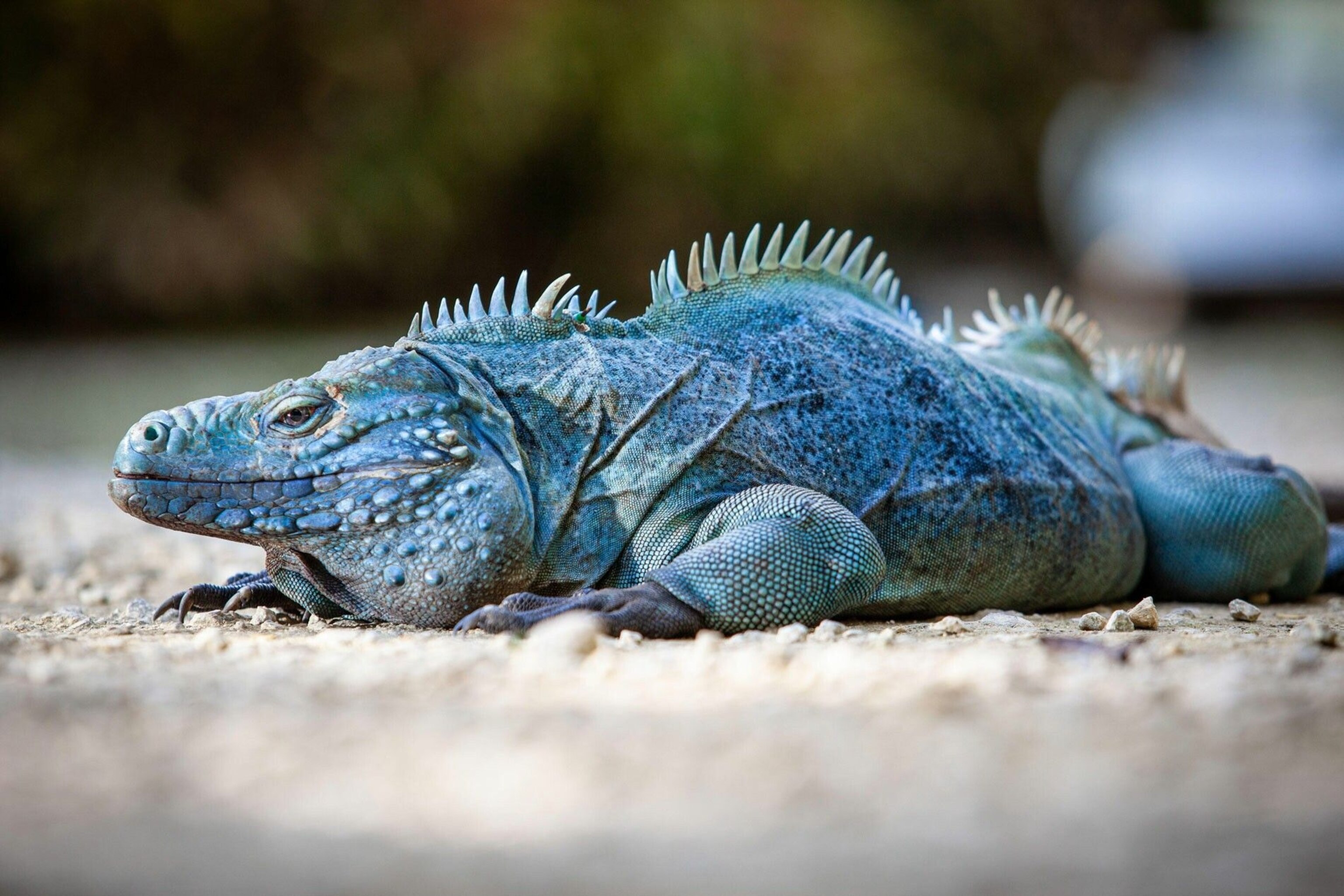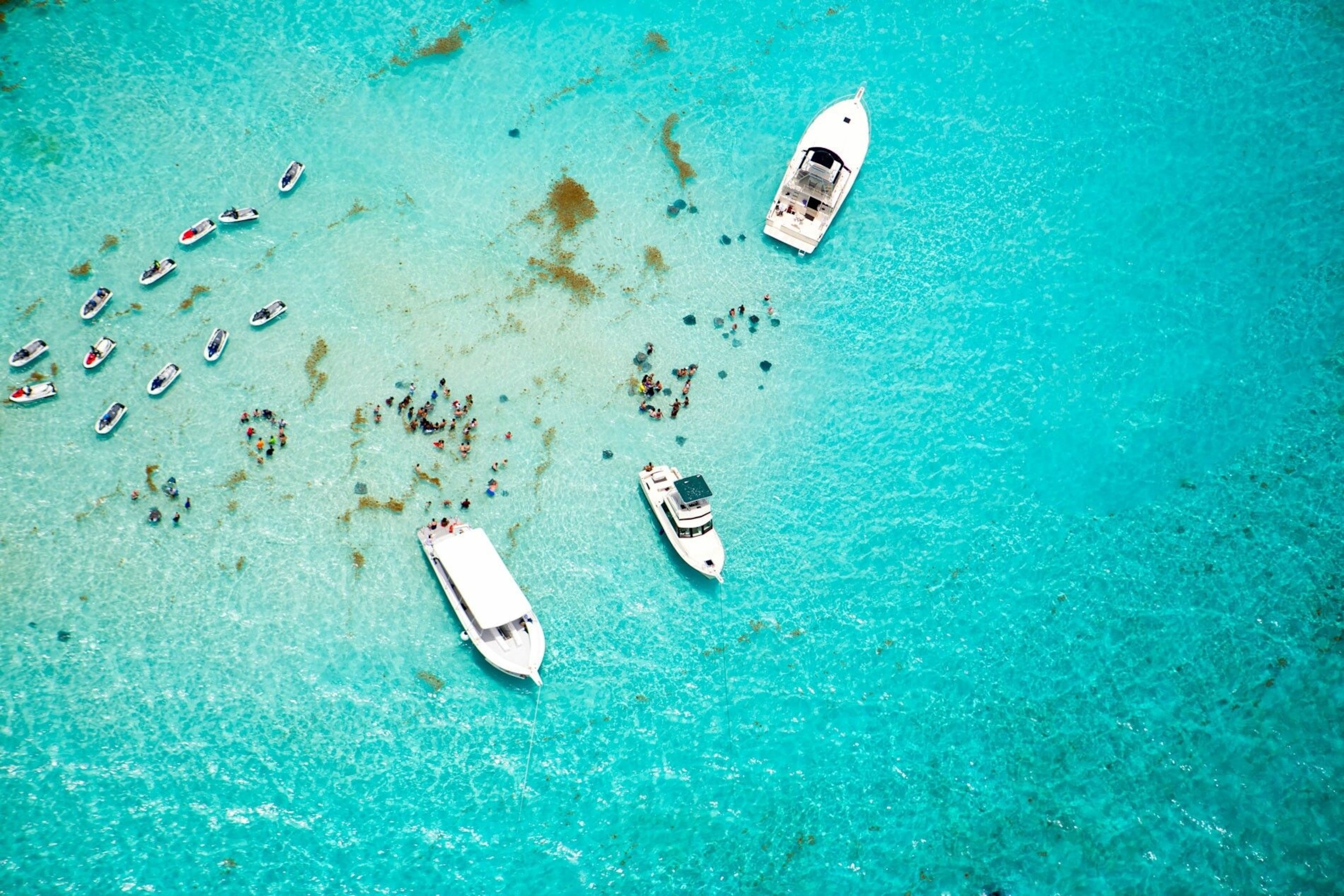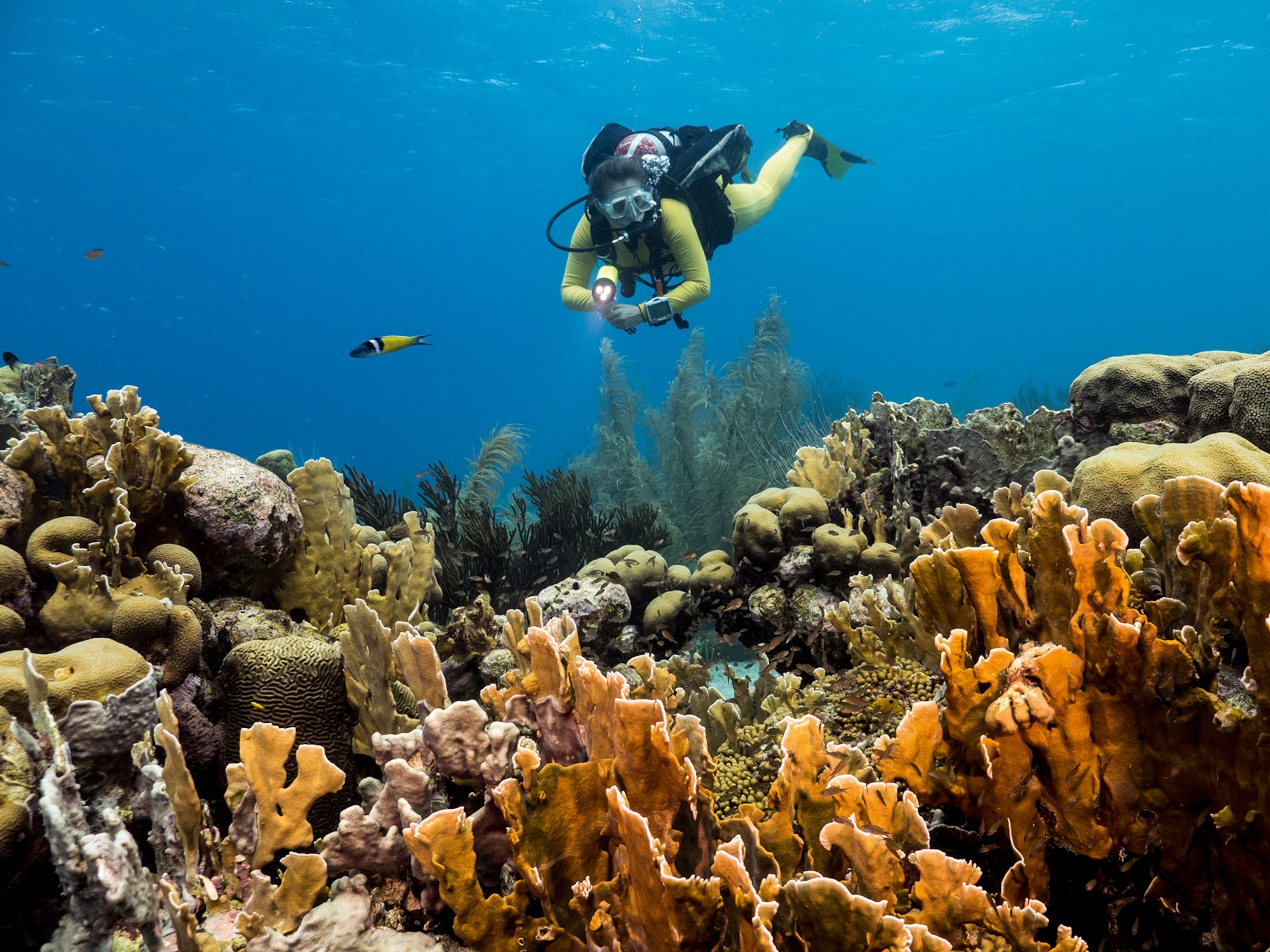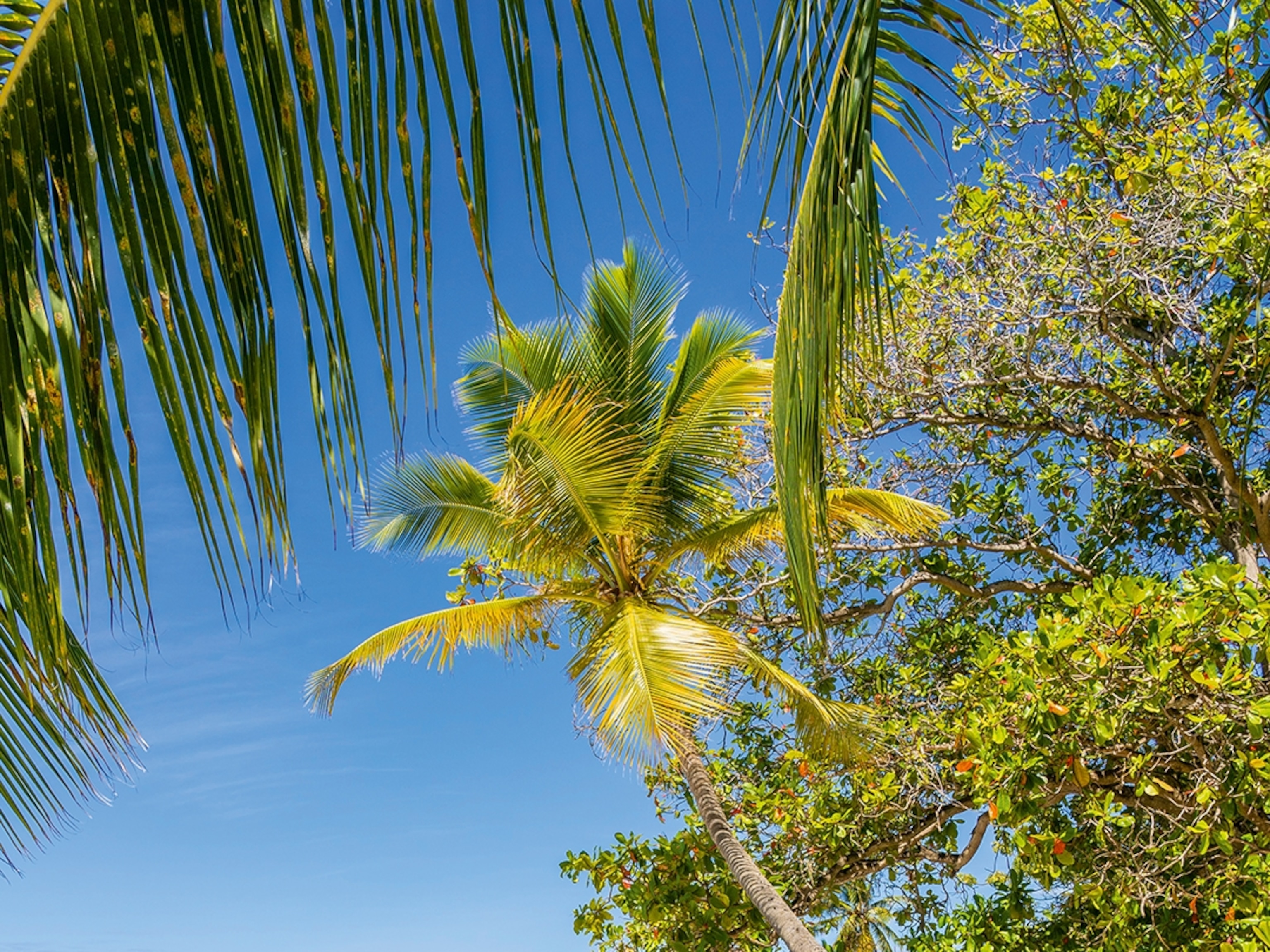
Why the Caribbean Island of Grand Cayman should be on your radar
With its luminescent waters and powder-white sands, Grand Cayman ticks all the boxes for a classic Caribbean getaway. Yet beyond the beach, a wilder side awaits — one of flora-rich hiking trails, underwater shipwrecks and startling sea life.
Where is Grand Cayman?
Situated some 200 miles south of Cuba, Grand Cayman is the largest and liveliest of the three Cayman Islands, found scattered across crystalline Caribbean seas. As a British Overseas Territory, it’s home to a thriving expat community who lend a sleek, cosmopolitan vibe to the gentle pace of life. In fact, the island strikes the perfect balance between great amenities — thanks to its vibrant hotel and restaurant scene — and exciting beachy adventure. A quick hop via domestic flight delivers you to the two sister islands of Little Cayman and Cayman Brac, just five miles apart and blessed with brilliant climbing spots and world-renowned diving sites.
What are the island’s best draws?
There’s no better introduction to island life than the famed Seven Mile Beach, touted as one of the finest in the Caribbean. Facing west, this crescent of pearl-white sand is a picture-perfect sunset spot and where the island’s best hotels, watersports and diving operations are located.
Grand Cayman’s finest treasures, however, lie beyond its shoreline. There are an impressive 356 diving sites dotted around the archipelago, ranging from shallow reefs to fascinating shipwrecks home to colourful tropical fish, reef sharks and sea turtles. Scuba divers can take the plunge with one of the island’s top-notch diving schools or try another aquatic exploit — there’s paddleboarding, windsurfing, kayaking, sailing or nocturnal snorkelling among glittering bioluminescence. Families love the boat trip to Stingray City, the highlight of which is standing on a waist-deep sandbar as soft-to-stroke stingrays feed from your hand.
Above sea level, there’s a fantastic hike in the Mastic Reserve, which is protected by the National Trust as the largest area of untouched old-growth forest on the island. The rugged, 2.3-mile Mastic Trail weaves through black mangrove and ancient woodland, thriving in native flora and alive with yellow-chested bananaquit and squawking parrots — both endemic to the island.
More wildlife is found in the Queen Elizabeth II Botanic Park, including the island’s most exotic resident: the endangered blue iguana. A decade ago, less than 25 of these Caymanian critters remained on the island, but thanks to a dedicated conservation mission, more than 1,000 now roam.
To the north side of the island — under lush, tropical forest — the glistening interiors of the Crystal Caves await. Formed over thousands of years, only recently has excavation allowed the public to visit the caves, making the site feel wonderfully off-the-radar. Expert guides are on-hand to accompany you through the spectacular stalactites and stalagmites.

What is there to eat and drink?
Fresh seafood steals the show and there’s a plethora of inviting eateries in which to sample it, from beach shacks to upscale hotel restaurants. In George Town, the island’s capital, The Brasserie offers a delicious farm-to-fork menu using herbs and vegetables picked from its own garden. The town’s Saturday farmers’ market is the place for local flavours — the conch chowder is a must-try. Meanwhile, beach eats are at their best on the northern tip of the island. Here, colourful shacks slung across the beachfront serve slap-up jerk-seasoned mahi-mahi and sizzling conch fritters.
Who should visit?
The island’s laid-back lifestyle makes it a blissfully carefree family destination — it’s safe, sunny and has enough outdoor diversions to keep children of all ages entertained from dawn until dusk. But the island promises proper adventure, too — whether you’re into marine wildlife or just want to explore unforgettable landscapes.
When to go
Peak season falls between mid-December to mid-April when reliable clear skies and calm seas provide divers with exceptional visibility. Rainy season falls between May to October while hurricane season runs from June to November.

Plan your trip
Getting there
No direct flights currently run from the UK, but British Airways flies regularly with a stopover in Nassau, in the Bahamas, in just over 12 hours. Cayman Airways operates daily flights between Grand Cayman, Cayman Brac and Little Cayman. The easiest way to explore Grand Cayman is by hire car, picked up directly from the airport. Like the UK, it’s a left-hand drive. Otherwise, flat terrain and good roads make cycling on the island easy.
Where to stay
The most desirable stays are set along Seven Mile Beach, including three brilliant resorts from the Marriott Bonvoy group. At the recently renovated Ritz-Carlton Grand Cayman, luxury abounds across a dizzying array of amenities — there are six bars and restaurants, a nine-hole golf course and an elegant La Prairie spa. Further down the beach, the Grand Cayman Marriott is a chic favourite among visitors, offering casual luxury with its breezy beach-house design, light-drenched communal spaces, and brilliant kids’ club entertaining little ones with beach games and other activities. The Westin Grand Cayman has a lively atmosphere and a friendly concierge on hand to organise everything from dinners out to horse-riding excursions. The fresh-water pool has a swim-up bar perfect for a sunset cocktail or two. For more information, visit marriottbonvoy.com
Follow National Geographic Traveller (UK) on social media
Twitter | Facebook | Instagram




